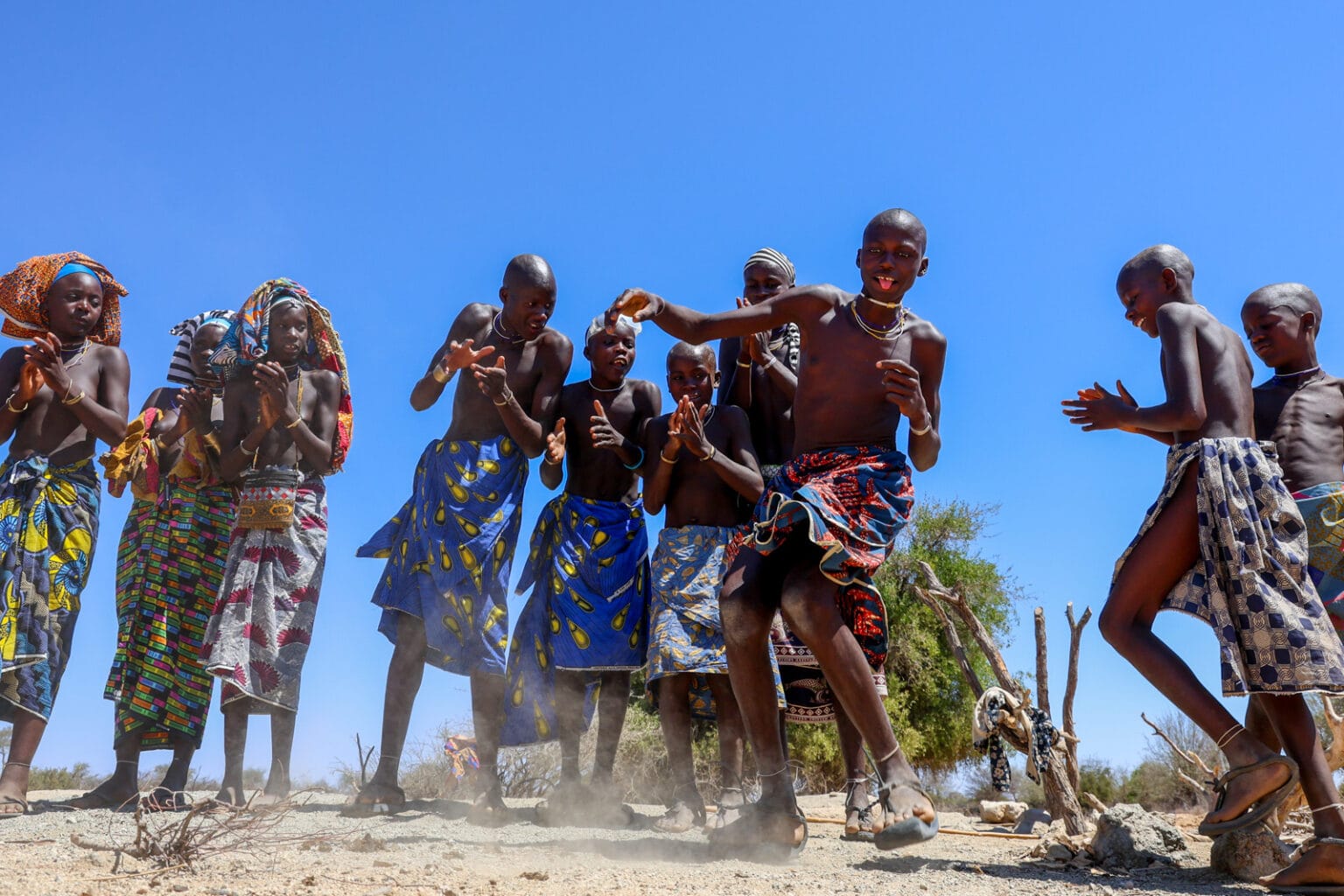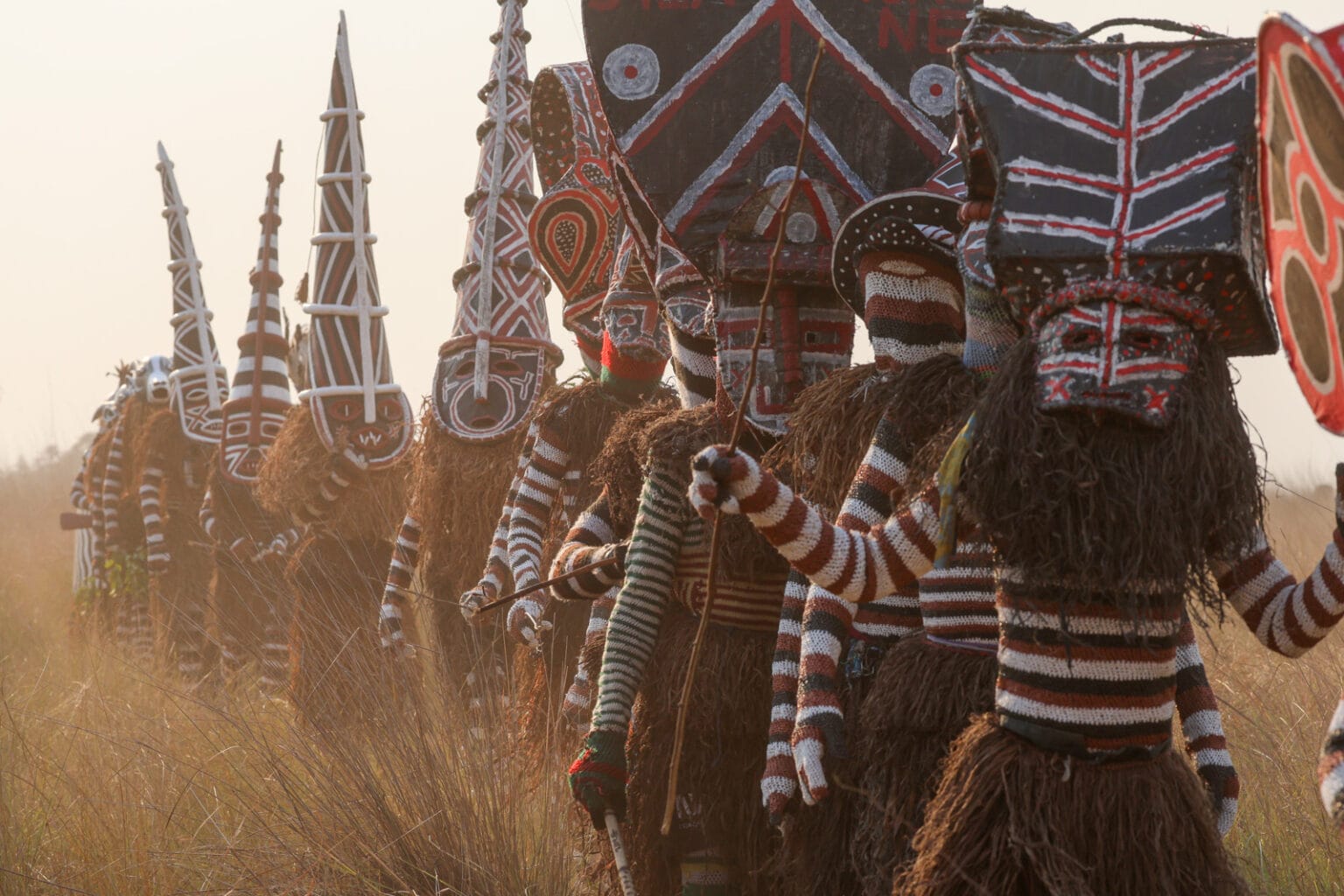Likumbi Lya Mize ceremony of the Luvale people of Zambia
The Likumbi Lya Mize ceremony is a series of ceremonies held by the Luvale people of northern Zambia in honour of King Ndungu, the principal traditional authority, marking the end of the mukanda (initiation of children).

Every year at the end of August, thousands of people gather to attend a ceremony that combines tradition and modernity. Sacred and royal masks perform ancestral rituals, while a few metres away, people drink and dance to the beat of electronic music. Tradition and beach party. An explosive combination that is definitely worth experiencing.
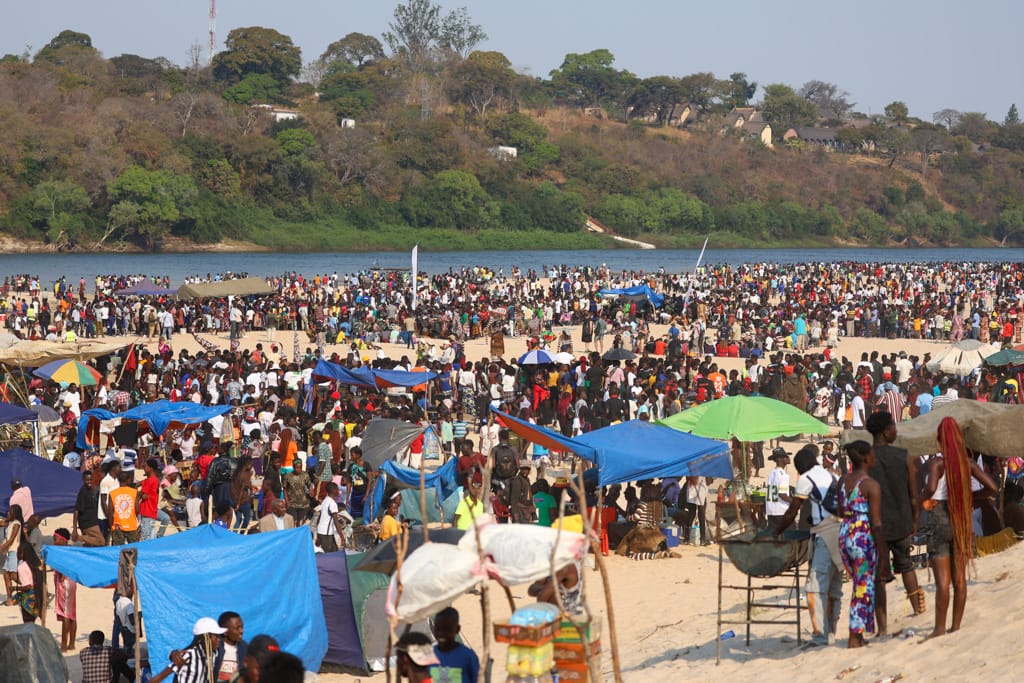
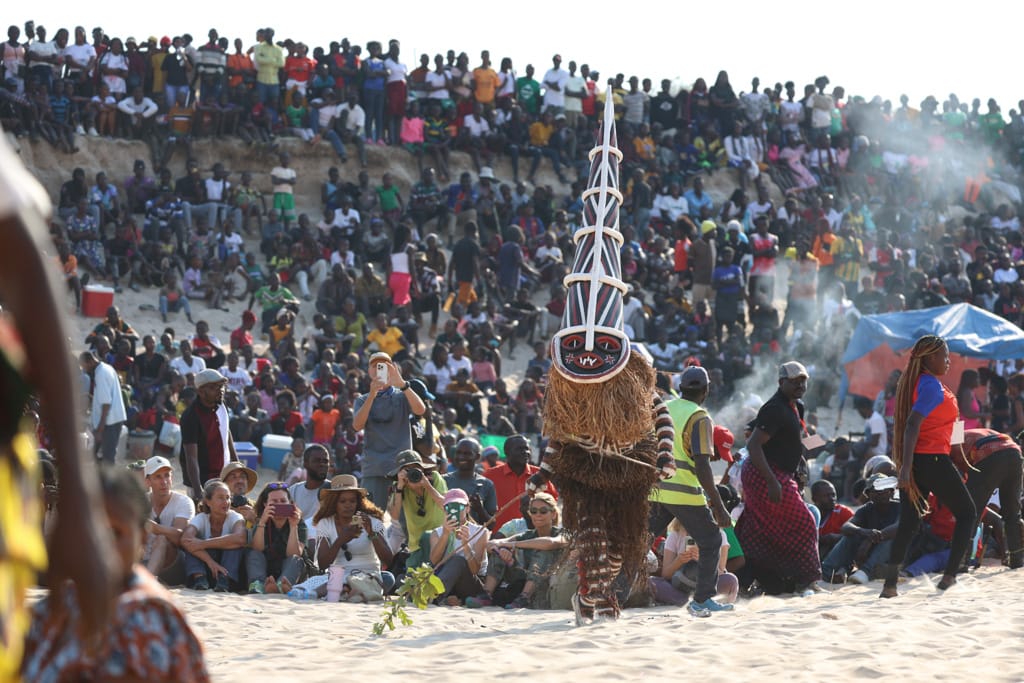
The Likumbi Lya Mize displays the impressive makishi masks, which are very special and artistic, making the ceremonies of the Luvale people so interesting and visually powerful.
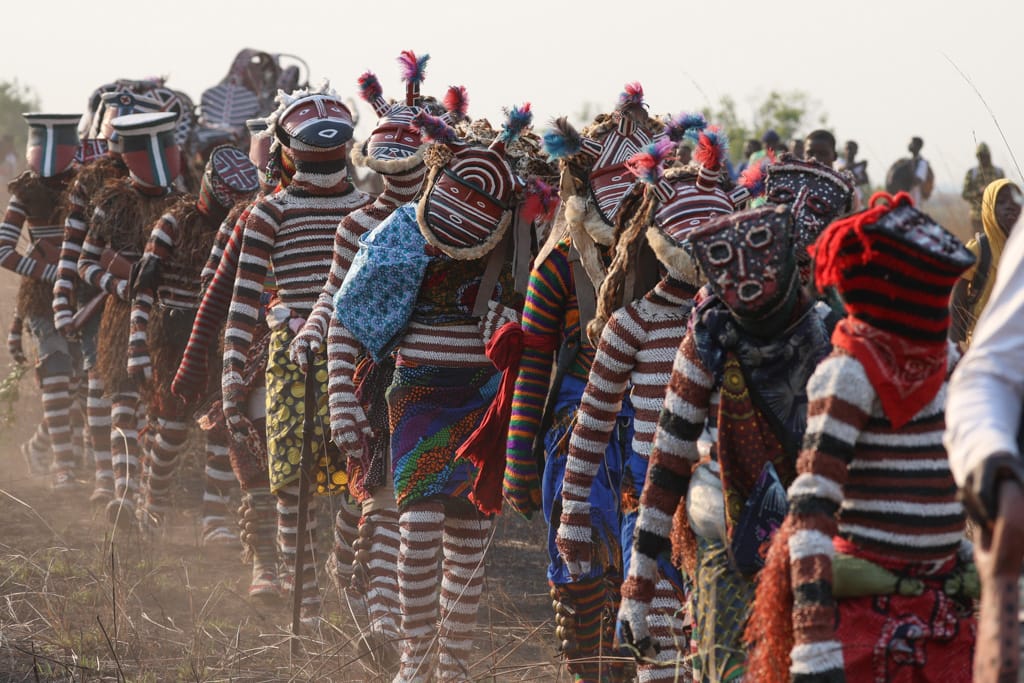
The Luvale, Lunda, Luchazi, Mbunda, Thokwe and other related peoples of western and north-western Zambia often turn to their ancestors for spiritual influence and assistance. The ancestors “come back to life” in their mask forms to participate in the affairs of their living descendants.
These peoples, who live in areas of Zambia, Angola and the Democratic Republic of Congo, create more than a hundred ancestral mask characters or makishi (singular likishi), which are sometimes represented in the mukanda initiation of children and the investiture and confirmation ceremonies of chiefs (Bastin 1982: 81-105; Kubik 1983: 88-135; Félix and Jordan 1998; Jordan 1998).
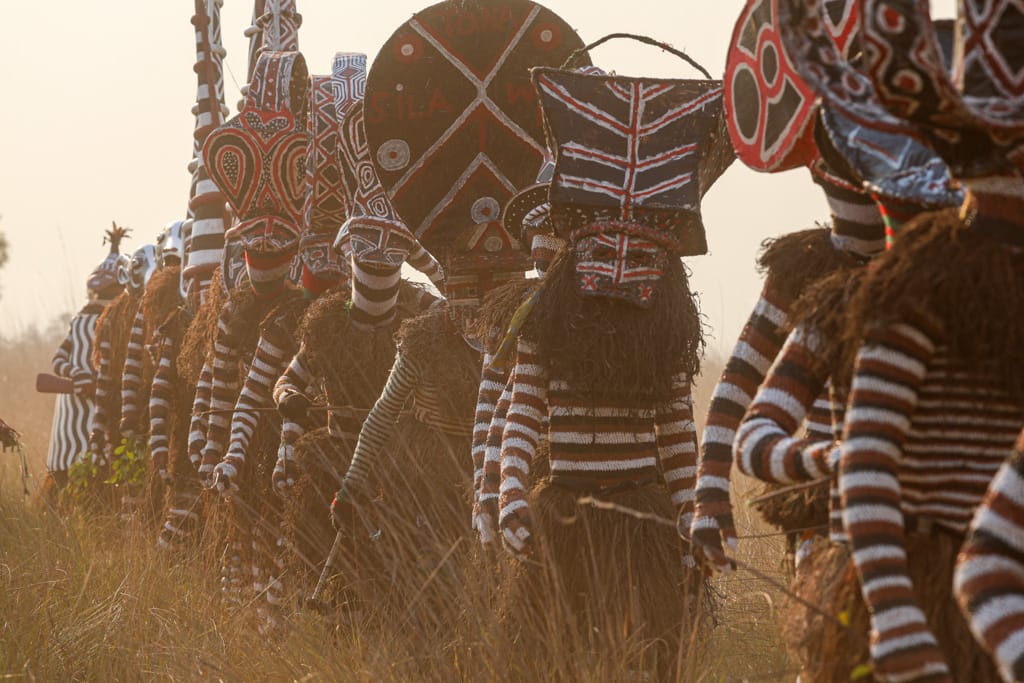
The different makishi characters have distinct physical, symbolic and behavioural attributes, which are directly related to the particular functions they perform in ritual and ceremonial occasions. Makishis also have different ranks and hierarchical positions.
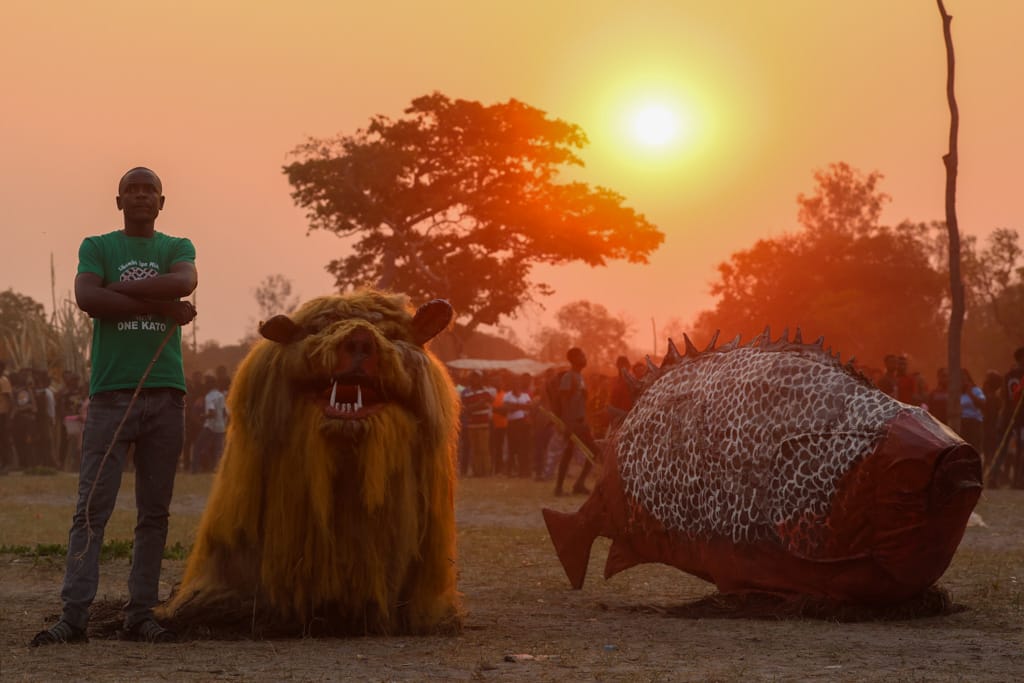
The Makishi Masked
The masked makishi originate from male circumcision rituals (mukanda) and are considered by the Luvale people to be ancestors who manifest themselves in the form of masked dancers.
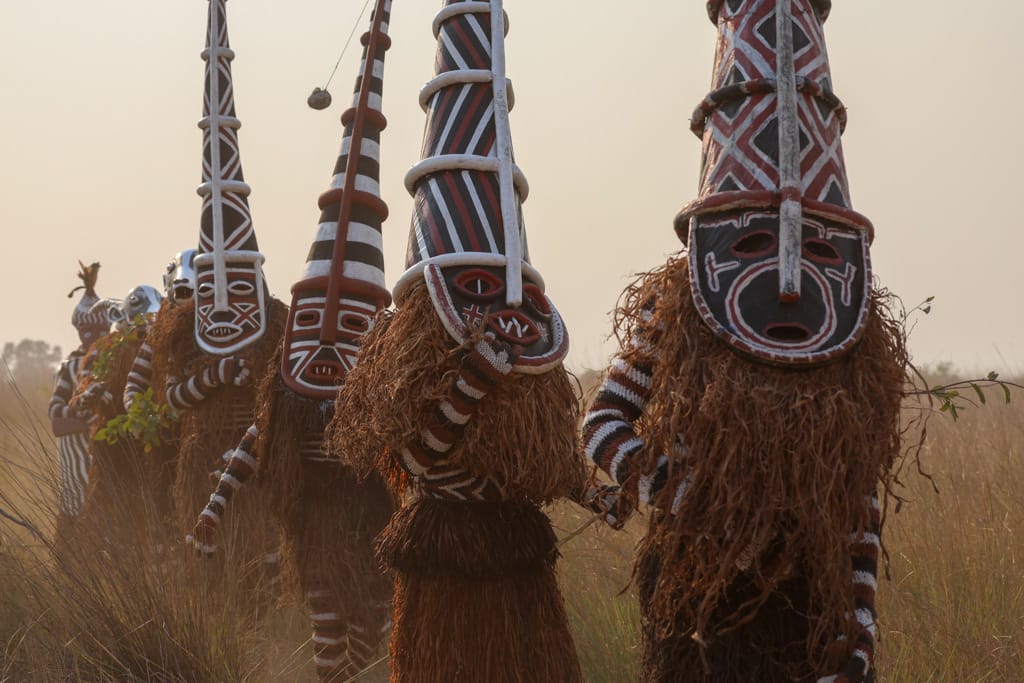
It is known that in traditional mukanda (still common in Zambia and DR Congo), makishi occupy a central place in the ritual, playing specific roles throughout all its stages.

It is worth highlighting their role as mediators between the internal and external universes of mukanda, that is, between men and women, initiates and non-initiates.
They are also the main protectors of children in the process of initiation, introducing them, throughout their confinement, to specialised knowledge mainly related to the spiritual world.
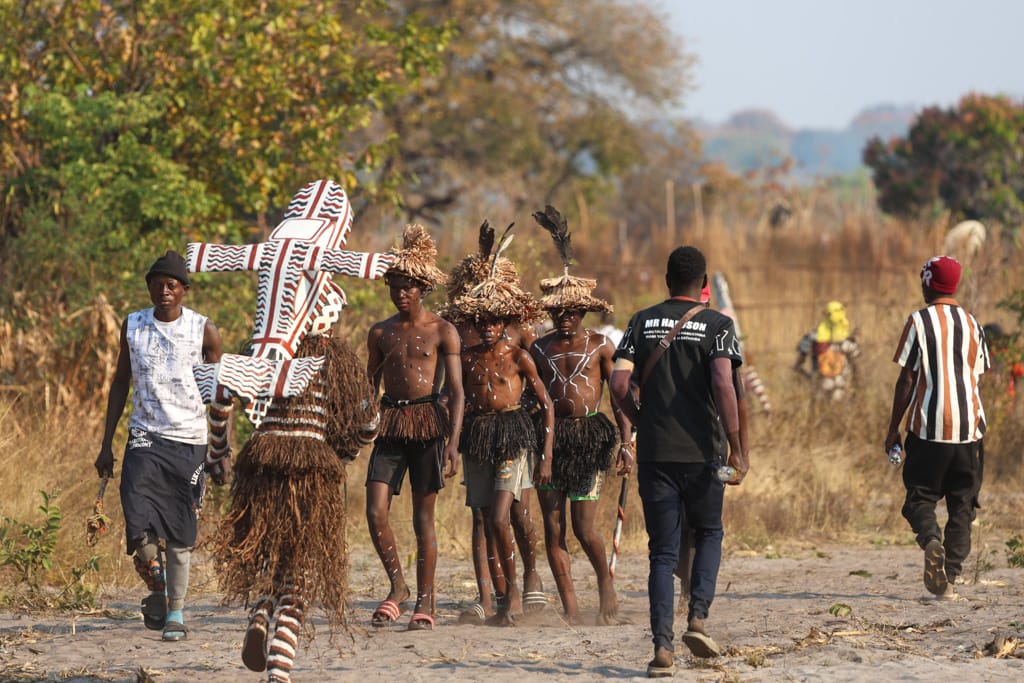
Although original to circumcision rituals, makishi may also appear in ceremonies for the enthronement of traditional chiefs, among other socio-political events.
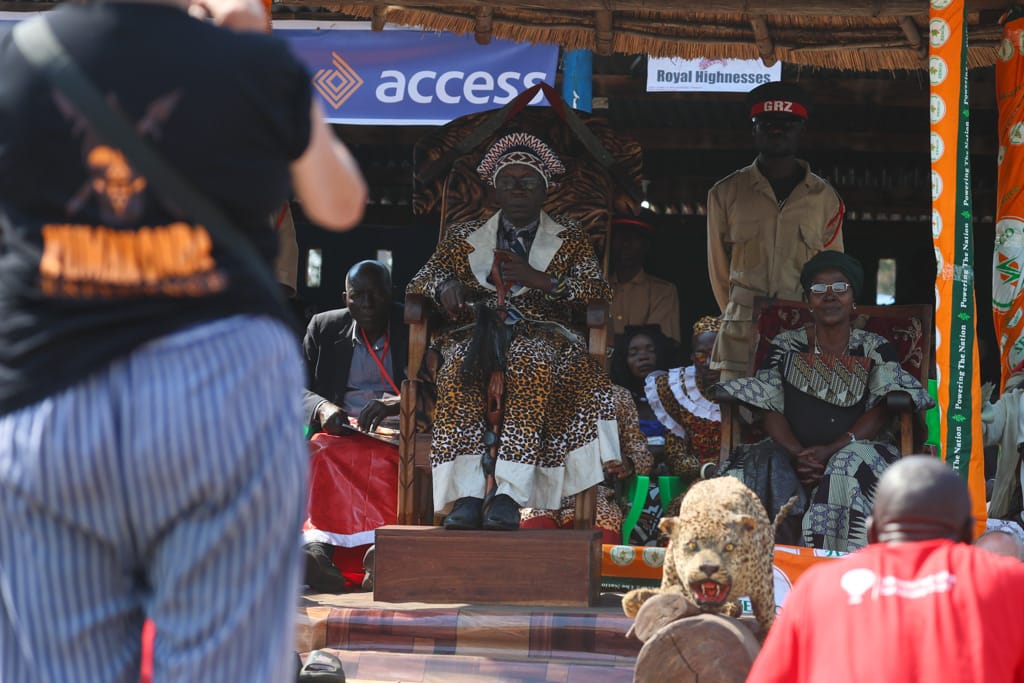
Different types of Makishis
Makishis are characterised by the use of masks and customised clothing. Each mask or Likishi (in the singular) has its own meaning.
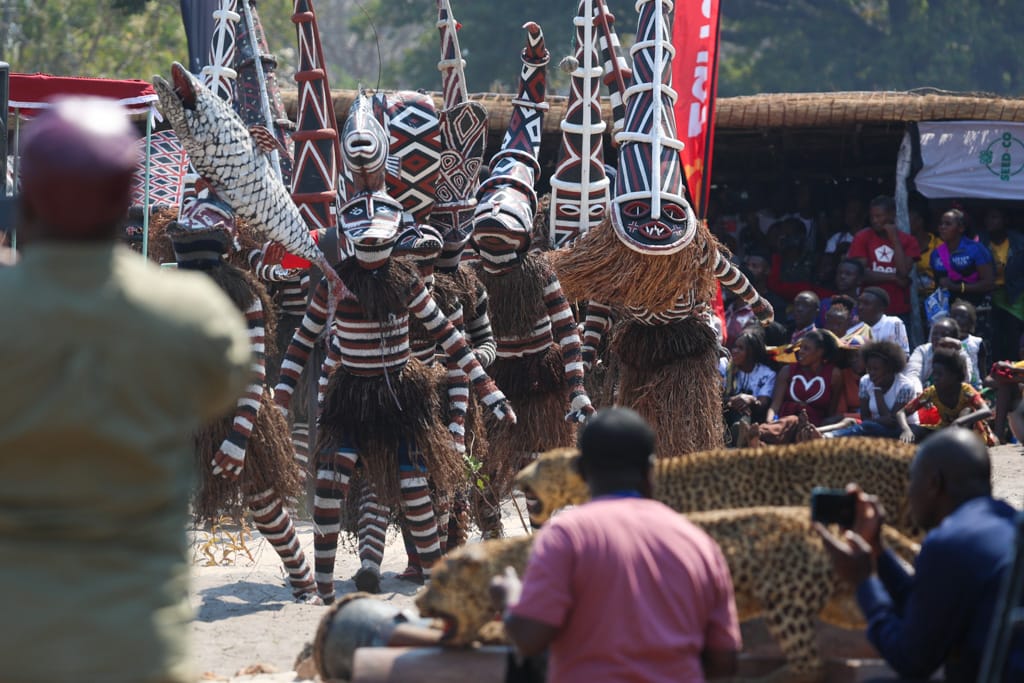
Mukishi masks are highly sought after and are displayed in major museums around the world. They can be anthropomorphic, zoomorphic, hybrid or semi-abstract.
Some types are still carved from wood, but most are made from different resinous materials such as beeswax and fibre structures and branches.
The garments, in general, are a kind of braided second skin, traditionally sewn with plant fibres and, more recently, with industrialised cotton threads with multicoloured striped patterns.
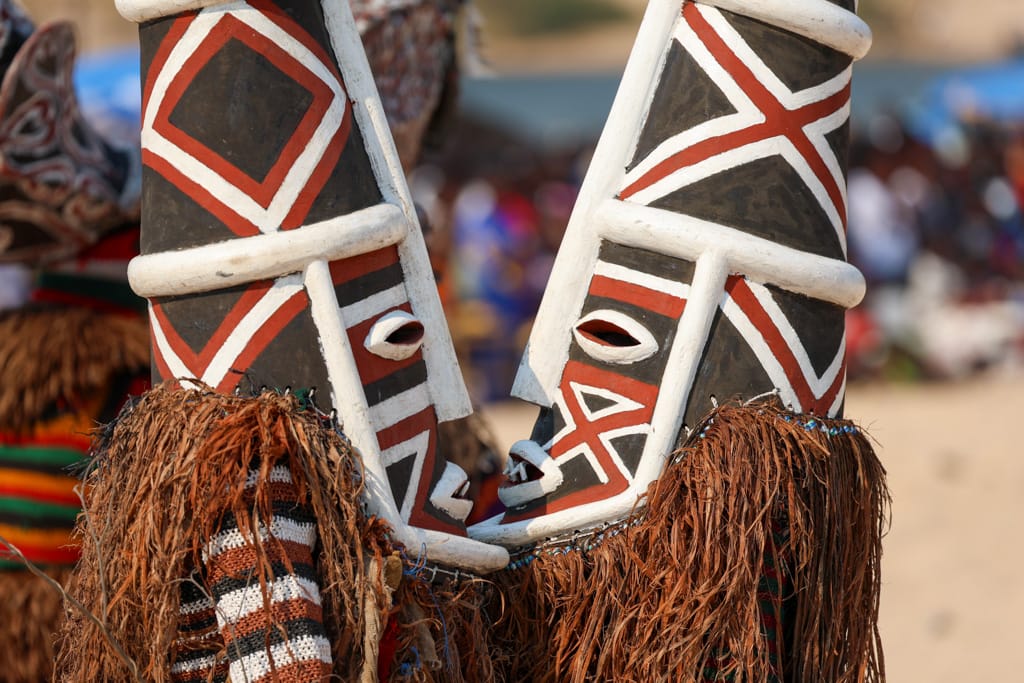
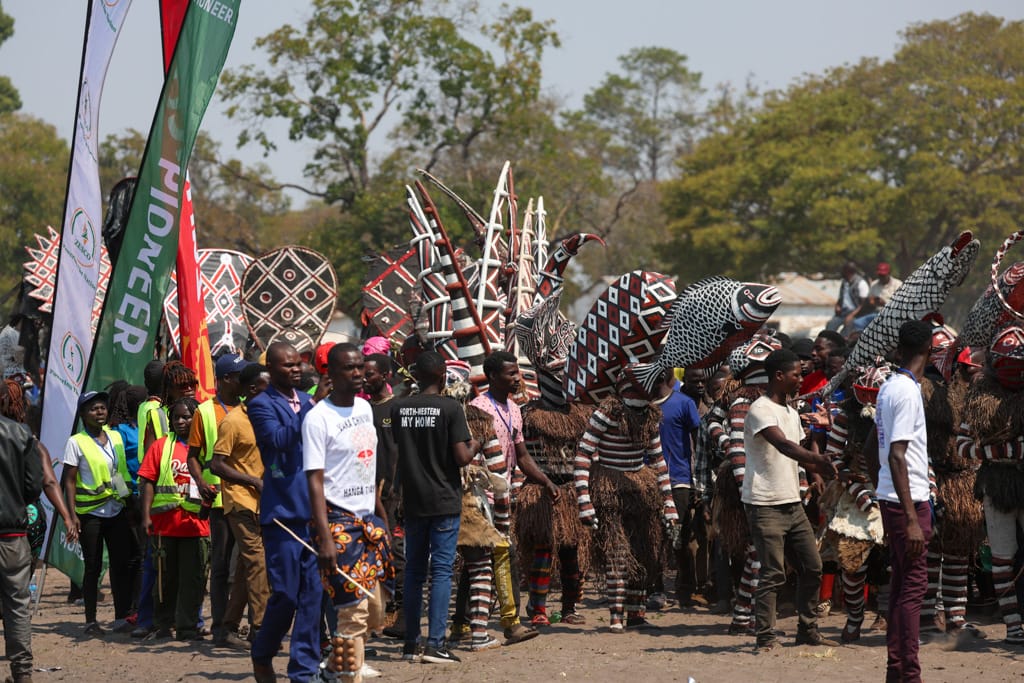
King Kayipu, the real ancestral spirit
Of all the Makishis, the king is Kayipu, a mask representing royalty. He is the largest and most majestic of the Makishi, with an enormous round head.
Kayipu also represents ancestral spirits in the land of the living. Kayipu is only seen once a year, during the traditional Likumbi Lya Mize ceremony.
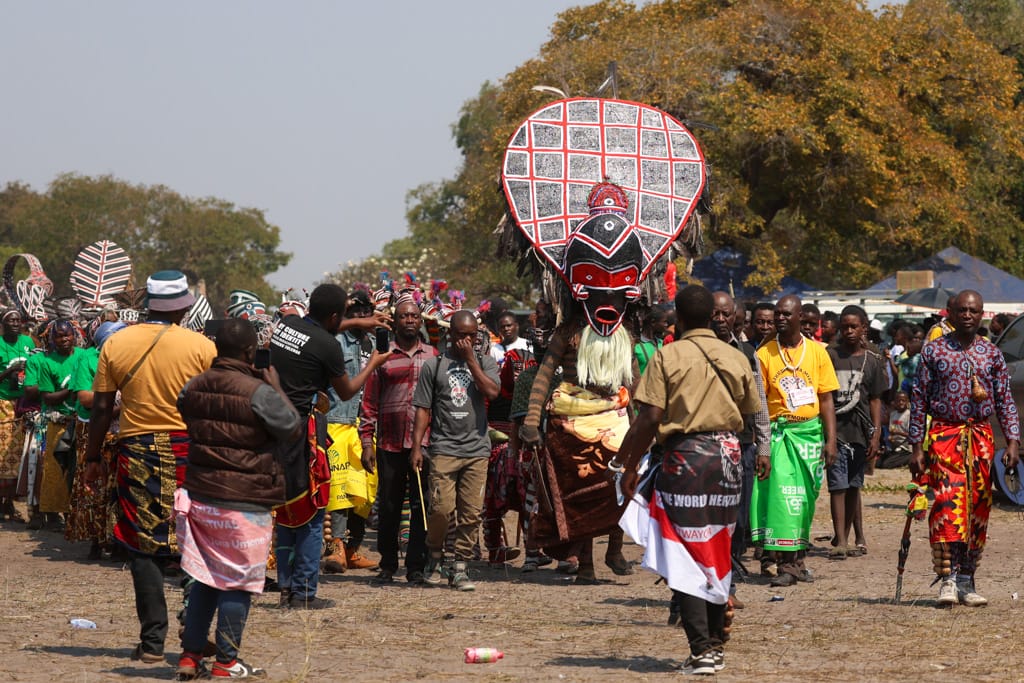
Did you know that even among the circumcised men of Luvale, both young and old, some have never approached Kayipu? He is sacred and only interacts with people of royal blood and those anointed by the royal institution.
The only other occasion on which Kayipu appears is when the heir to the Luvale throne is circumcised. During that Mukanda camp, Kayipu will appear and remain in the camp to protect it from any evil spirits that want to harm the child, who is the future chief Ndungu, Chinyama or any Luvale throne.
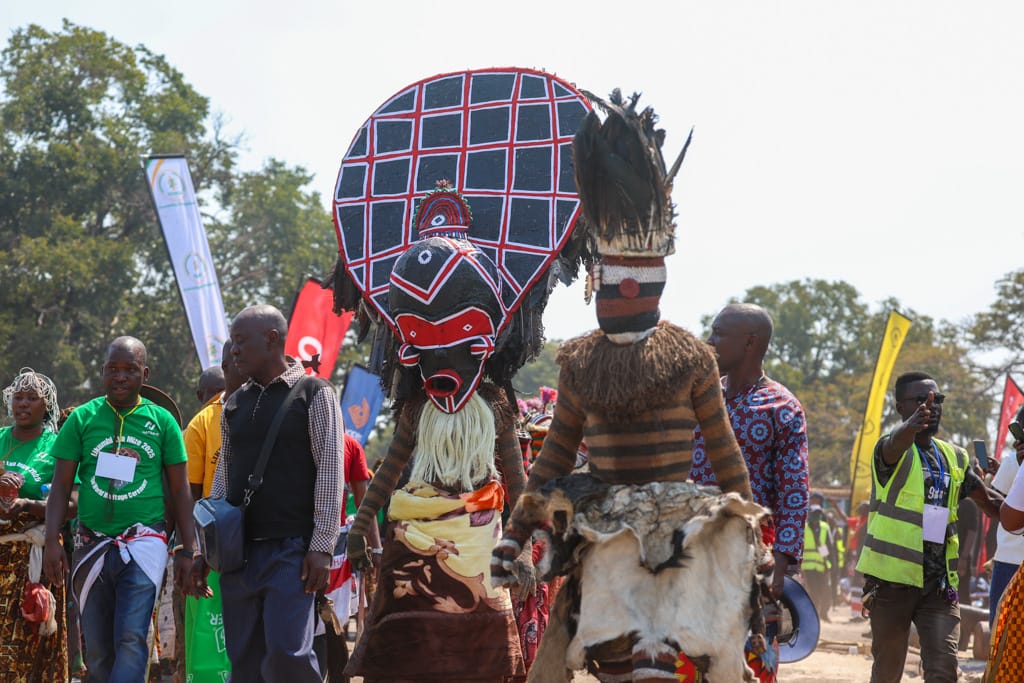
Kapalu, son of Dey Kayipu and administrator of justice
Kapalu is the bodyguard or son of King Kayipu, and always accompanies the king. Kapalu follows Kayipu’s wishes, his main tasks being to maintain order and discipline, and to perform the sacrifice of a goat.
During Mize Day, Kapalu is in charge of controlling the crowd, a security figure who wields a stick and ensures order. He also helps his father, King Kayipu, sacrifice a goat in the main arena. He has a feathered headdress and red eyes. He does not dance for anyone because he is royalty; rather, everyone must dance for him.
Kapalu is the only Likishi who has the freedom to interact with the bosses. He is always busy and very dramatic.
Like Kayipu, Kapalu only appears once a year, unless an heir to the throne of Luvale undergoes male circumcision.
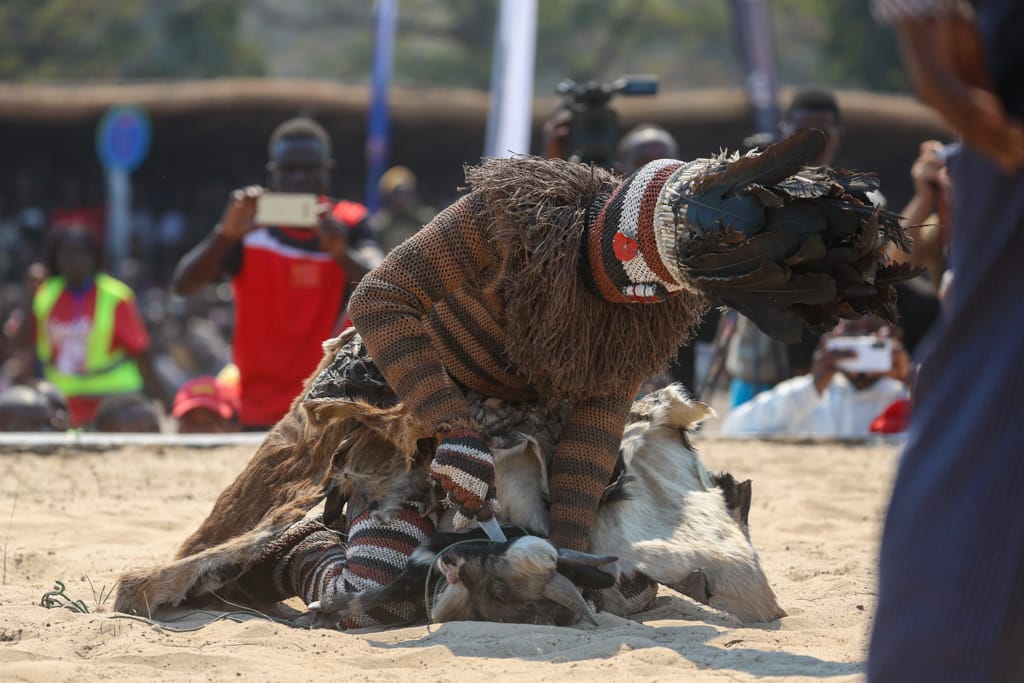
The goat is offered to the ancestors, known as the Vakhulu, to appease them in gratitude for blessings such as a good harvest, rainfall, a fruitful fishing season, health, peace, and other favours granted to the Vaka Chinyama. With natural strength, Kapalu lifted the goat and quickly carried it to the Mukanda sand as if it were nothing.
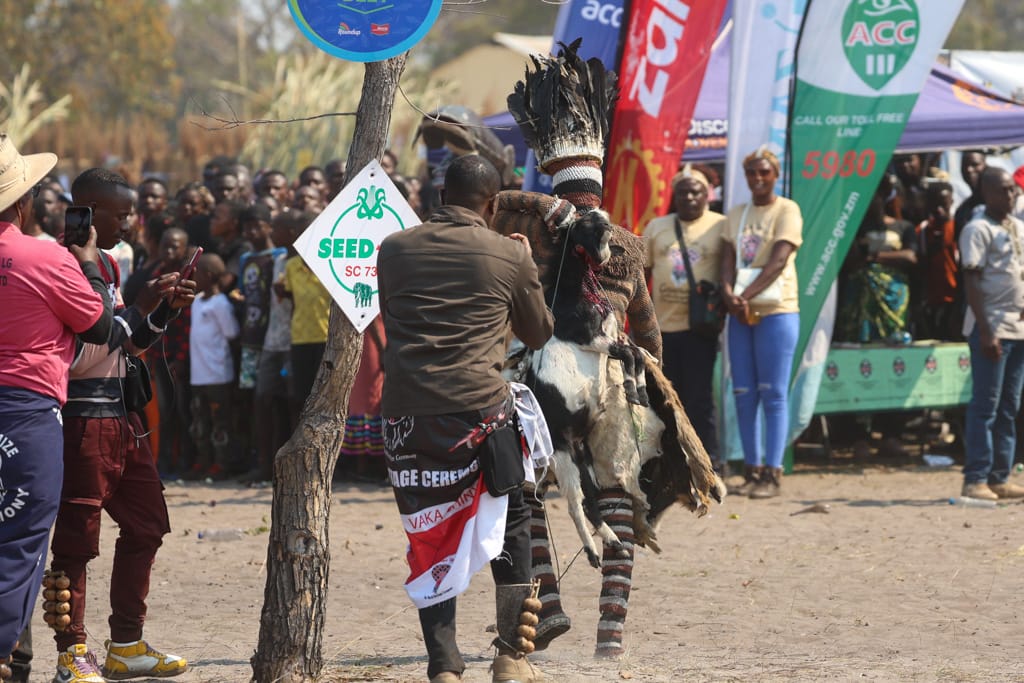
Other Likishis such as Mwana Pwevo, a female acrobatic mask
The mask or Likishi Mwana Pwevo means the spirit of the adolescent. This mask performs the acrobatic dance over the waters of the Zambezi River and also on the 10-metre-high vertical poles on the main day of the Mize.
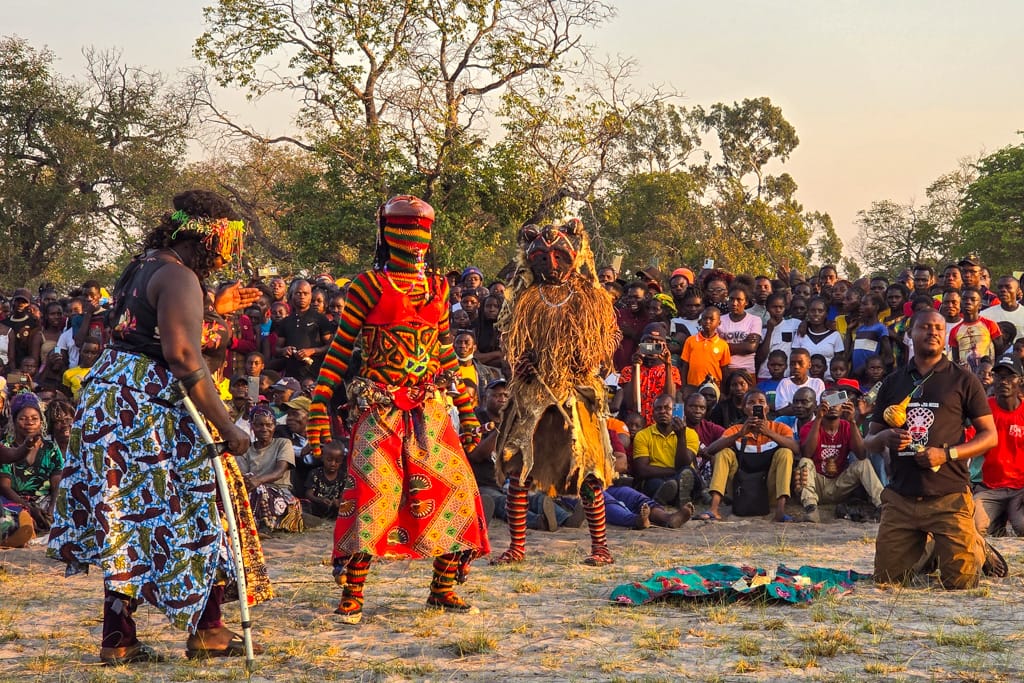
Each Likishi has a different role during the Mukanda period or during ceremonies. Little or nothing is left to chance or is meaningless. Some Likishi that are no longer sacred or are no longer used are burned and new ones are made.
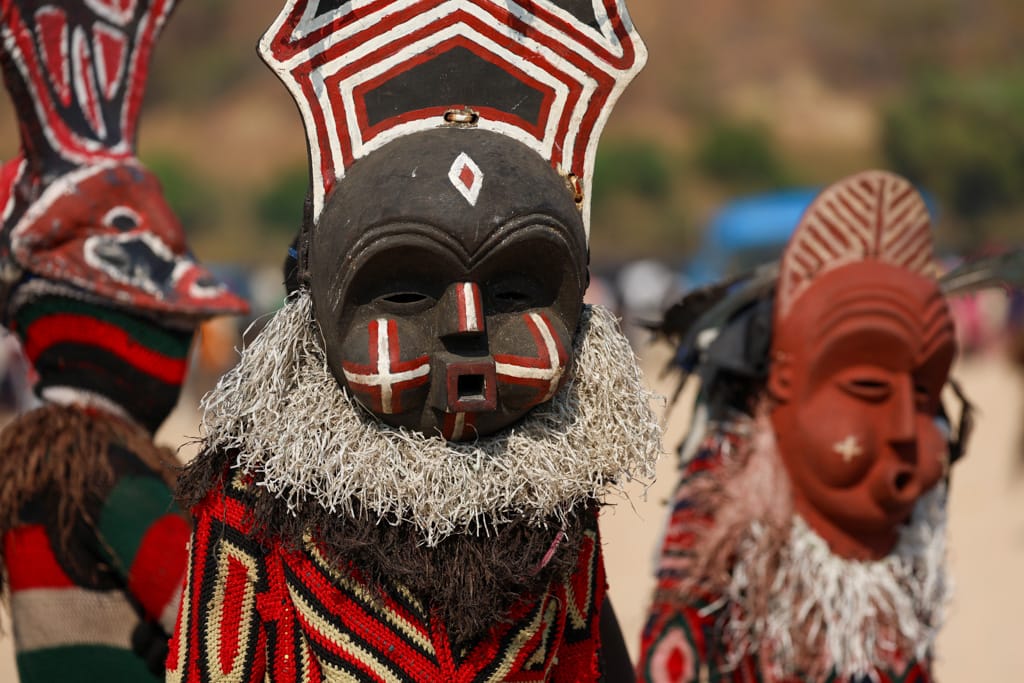
Zambian Mukanda
The masked makishi signal the end of the mukanda, as we mentioned earlier. This is an annual initiation rite for children aged eight to twelve.
This ritual is celebrated by the Luvale, Chokwe, Luchazi and Mbunda peoples, who live in the north-western and western provinces of Zambia. These mukanda ceremonies are also held in the Democratic Republic of Congo among the Pende and Suku peoples, for example, and we have been attending them for years.

Generally, at the beginning of the dry season, children leave their homes to spend a period of one to three months in an isolated camp in the savannah. This separation from the outside world marks their symbolic death as children, and they are often regarded as adults.
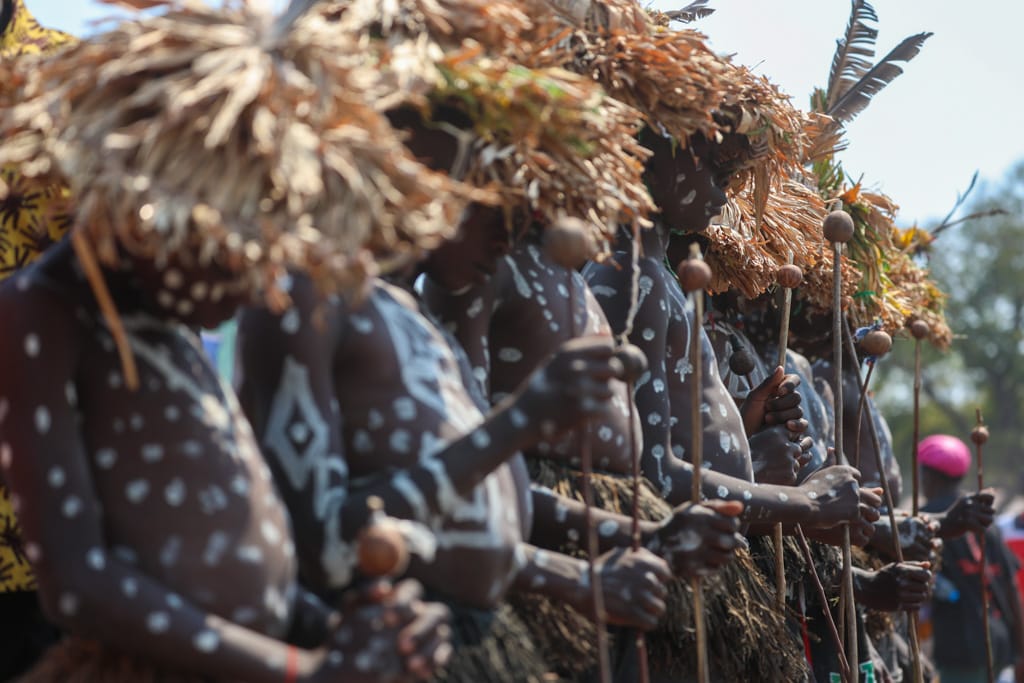
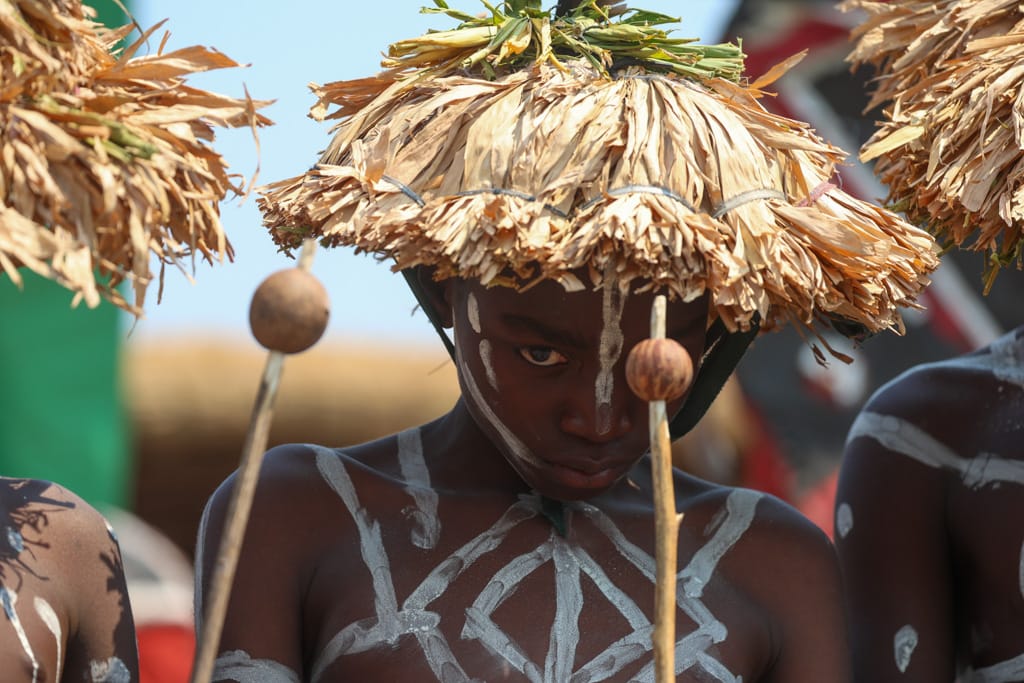
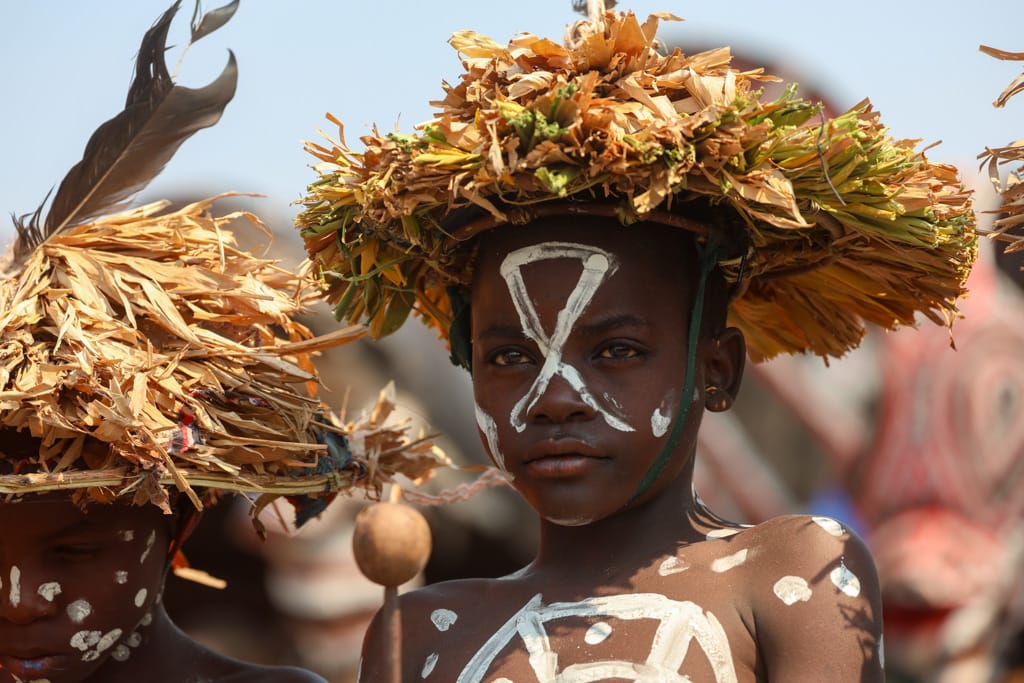
The mukanda includes circumcision of the initiates, giving proof of courage and receiving lessons on their future role as men and husbands.
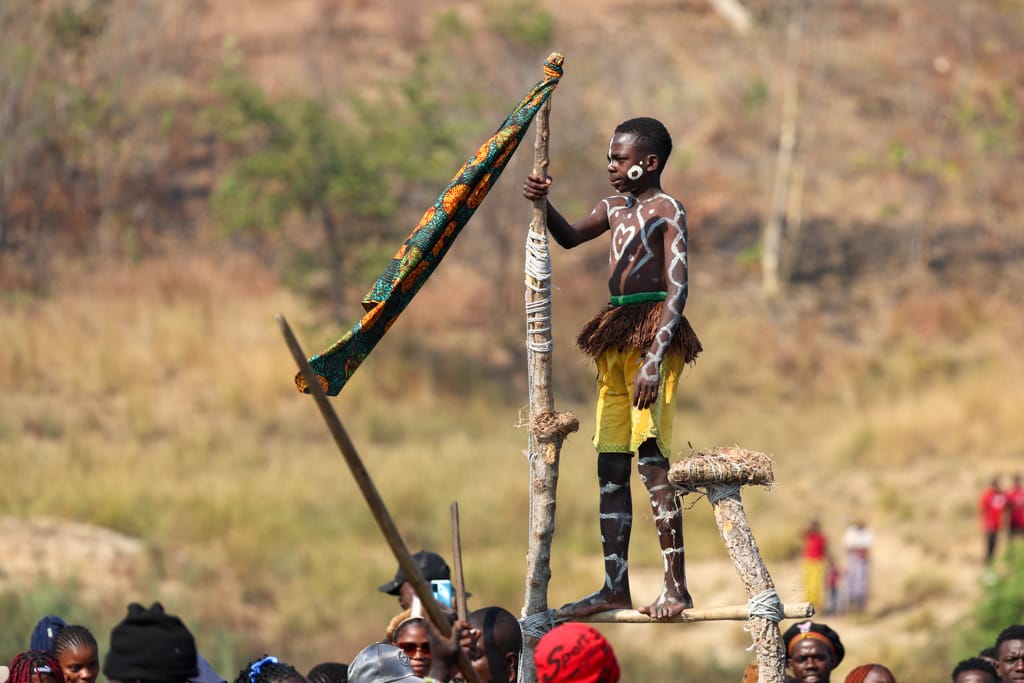
Each initiate is assigned a particular masked character, who accompanies him or her throughout the initiatory process.

Approximate programme of ceremonies at Likumbi Lya Mize in Zambia
- Monday will begin with Kulyachisa: The ceremony will commence with the Kulyachisa Tundaji ritual, where the initiated children will be taken on their first bath from the Mukanda camp to the Zambezi River and back. This ritual will take place in the early hours of that day.
- On Wednesday, the first Chilende, the grand ceremony begins. This extraordinary event will start at 9:00 a.m. with the resurrection of Makishi in the Zambezi cemetery, followed by a procession through the municipality, where various rituals will be performed. Next, the first Chilende will be celebrated on the plains near the Zambezi River, continuing across the Zambezi River, where Shombe night will be celebrated, right on the beach.
- Thursday, Chilende Chahausekeseke: this is the day of the big botellón/rave, when the sandy beach of the Zambezi River will become a huge stage for a celebration based on food and alcohol. The event will begin at around 10 a.m. and continue throughout the day until around 4 p.m., when the procession will travel the 3 km from the beach to the royal capital of Mize, the official residence of His Royal Highness Chief Ndungu, where the celebration will continue throughout the night.
- Friday, Chilende Chamu Nganda
- Saturday, Official Likumbi Lya Mize: This is the big day for all Luvale people and all spectators of the Likumbi Lya Mize, as it is the day when His Royal Highness, the Senior Chief Ndungu, will lead numerous guests in observing the Likumbi Lya Mize. It is the day when the people will see their Chief proudly and majestically greet his subjects. Various dances and other rituals will be performed in the Main Arena within the Royal Capital of Mize.

Travel with us to Zambia
If you would like to attend the Likumbi Lya Mize Traditional Ceremony, you can join our annual trip to Zambia, where we try to combine this ceremony with the Kulamba of the Chewa people, another spectacular event.




